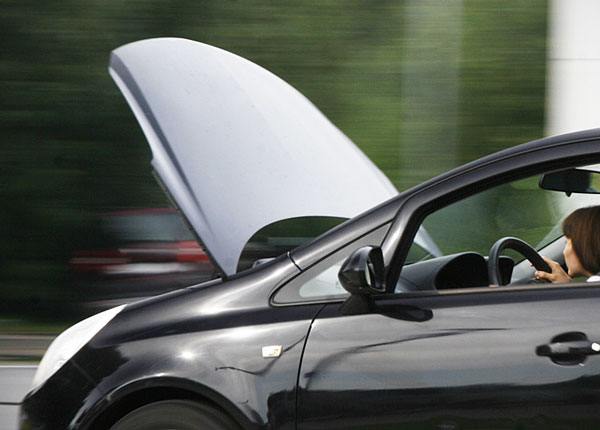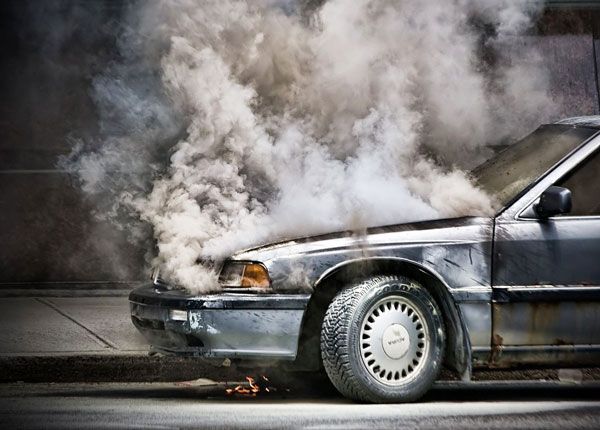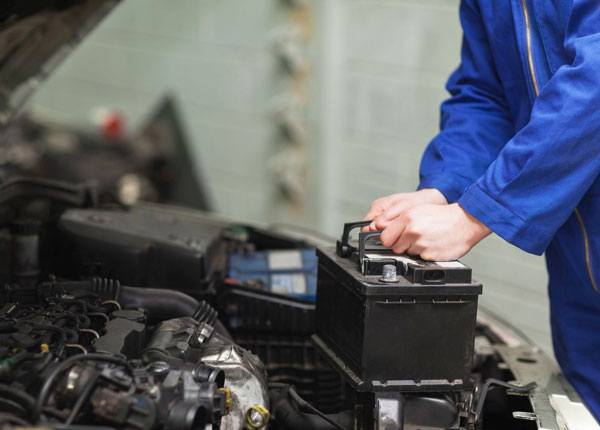
Driving With Limited Visibility: Windshield Wiper Failure & Open Hood
Updated Nov. 22, 2020Driving with limited visibility is dangerous, not to mention challenging. If you cannot see the road it will be practically impossible to maintain a safe following distance from the vehicle in front. Plus, you may not see approaching obstacles or hazards in time to avoid collisions.
There are certain driving situations in which we expect poor visibility, such as during adverse weather or at night. It is far easier to prepare and compensate for low visibility when we know it is coming. If your view is ever limited by an unexpected event – such as an object blowing onto your windshield or a wiper failure – try not to slam your foot down on the brake or swerve in panic. Do your best to respond to the situation calmly and methodically. The information presented in this module will help you.
Windshield wiper failure
You will realize just how important your windshield wipers are if they suddenly fail on you in rain, snow or fog. In this situation, your visibility may be slightly impaired or reduced to zero – this depends on the severity of the adverse weather you are dealing with.
You should not drive in rain, snow, sleet or fog without the use of your wipers. Attempting to continue your journey would be dangerous and may earn you a ticket if a law enforcement officer stops you. If your windshield wipers stop working while you are driving:
- Immediately slow down, but do not slam on the brakes. You should increase your following distance when visibility is poor.
- Flip the windshield wiper switch a few times. If a faulty switch connection or an electrical problem is causing the failure, retrying the switch may fix it.
- If your wipers are still not working, pull over at the next opportunity. You may have to wind your window down and lean your head out to see the road ahead.
- Call for assistance by the roadside or wait for conditions to improve so that you can continue driving without your wipers. It is wise to keep a scraper and an old rag in your car for such emergencies, as you would need to wipe the windscreen down before carrying on.
Common wiper malfunctions
There are several reasons why your windshield wipers may not work as well as they should or may stop working altogether. Some of these issues will need to be remedied by a qualified mechanic and others you may be able to take care of yourself. Regularly inspecting and replacing your wipers should prevent any of the following malfunctions.
- 1

Torn wiper blades.
If your wiper blades are torn or damaged, the wipers will still operate but will not do a good job of clearing your windshield. Where the blades are damaged, they will not make full contact with the glass and will not be able to shift water and debris as a result. Torn blades can damage your windshield, by trapping dirt in the blade gaps and dragging it across the surface of the glass, causing scratches. - 2

Wipers are packed with snow or ice.
Heavy snow or ice may prevent the wipers from moving or may bend them out of shape when they do. Attempting to activate wipers that are buried under snow may damage the motor or the transmission. Always clear away snow and melt the ice before switching on your wipers. - 3

The windshield wiper fuse has blown.
This will happen if any obstruction (such as snow or ice) overloads the wiper motor. It is easier and cheaper to replace the fuse than it would be the entire motor. If replacing the fuse and clearing away the obstruction does not work, you will need to contact a mechanic. - 4

The windshield wiper motor is broken.
As with a failed fuse, a broken wiper motor will leave your wipers completely inactive and unable to clear any moisture or debris from your windshield. The wiper motor must be replaced before you drive the vehicle again. You may only drive it in clear weather if it is necessary to take it for repairs. - 5

Wiper pivot nuts need tightening.
If the nuts attaching the wiper arm to the pivot are loose, the motor will move the pivot but not the arm of the wiper. You can check for this by tightening the pivot nuts yourself. If this does not fix the problem, you must take your car to a professional for repairs.
Open hood
It is possible (though, unlikely) that your hood could pop open while you are driving and obscure your view of the road ahead. If your hood suddenly pops up while you are driving, follow these instructions:
- Do not panic.
- Switch your hazard lights on.
- Avoid suddenly braking as you could be hit from behind.
- Check the space behind you and brake gently.
- Roll the window down and lean out enough to see the road ahead.
- Pull over to the side of the road and secure your hood at the next opportunity.
Preventing your hood opening
Instances of car hoods popping open unexpectedly are quite rare, as most hoods are secured with a double latch system. When it does happen, it is usually because the driver has failed to secure both latches correctly and there is too much strain placed on the remaining latch for it to hold. The best thing you can do to prevent your hood from popping is to take extra care whenever you secure it. A few moments more spent fastening the hood could prevent a dangerous situation later.




